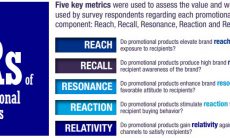The second quarter is behind us which also signals the end of the half. So what’s next?
Here in the US we’re taking vacations to recharge. No matter how much disconnecting we do, in those quiet moments we’re reflecting. We’re wondering about where we left money on the table and how we’re going to adapt our plays so that we win more in the coming months.
The Marketing Restrospective
In agile software development the team spends time at the end of each sprint performing a self review. This review is called a retrospective. The retrospective is a relatively brief meeting that seeks to answer three questions:
- What worked well for us?
- What did not work well for us?
- What actions can we take to improve our process going forward?
The purpose is not reflection on outcomes. The purpose is to reflect on the methods the team used to produce the outcomes. The goal is to become better at creating great work. By honing the abilities of the team, the outcomes will improve in a sustainable manner.
There’s a popular point of view that every function can be “agile.” I don’t think that’s true. Agile lends itself to work that can deliver value in an episodic manner. Not all work can be done in this manner. But that doesn’t mean we can’t learn something from agile about continuous improvement of the process.
At the heart of the retrospective is an assessment, by the team, of how well the marketing business processes worked, the identification of places where the process can be improved, and a finite set of actions that are going to be taken to improve the process. Let’s see how that works.
null
The Three Retrospective Questions
What worked well for us?
This seems like the simplest question but it can be a challenge to answer. There is not always consensus across the team. The purpose of this question is not only to celebrate success but also to eliminate things for the next question. Often things that are going well can be honed but resist the urge to oversharpen.
What did not work well for us?
This is the question that is both critical to improvement and a potential trap. Misery loves company and it’s easy to fall into a death spiral of complaints and commiseration. The key is to focus and prioritize. Agile teams know how to do this because they plan their work this way.
For teams less experienced in agile planning, it’s important to timebox this activity. Get the list out. Don’t spend too much time assessing it at first. Once the first pass is on the board, have the team vote on which are the most important things that didn’t work well so that you have a prioritized list of the most important gaps in performance.
If it’s helpful you can use a grouping methodology like: “People, Process, and Platform” to organize the opportunities.
What actions can we take to improve our process going forward?
This is where the rubber meets the road. Which of those things are you going to select to work on and actually deliver improvement in the near-term? This is another time box. While you may not work day-to-day in sprints, this is where you’re going to have to commit to delivering improvement in 30 days.
Why 30 days? There’s nothing magical about that timeframe but it is set in stone. You have 30 days to make a difference.
Go back to your list. Are the problems/opportunities granular enough that you can do something in 30 days? If not, refactor the list until you have 30 day “doable” actions in a prioritized list.
Finally select what you’re going to work on and deliver in 30 days. Remember, you have to do this stuff in addition to your team’s day job. At the beginning set your sights low. Get a sense of your capacity by delivering improvements. When you’re more experienced you can take bigger more aggressive bites.
Developing good habits
One of the most interesting things about agile development is the focus on continuous improvement of the process. It’s built into how the work gets done. In other business functions improvement is often a project, not a process. Your team’s challenge is to make improvement — reflection, planning, execution — a coequal part of their work regiment.
Conduct your 1H retrospective. Don’t spend more than four hours on the work. Choose your actions and get started. But don’t wait until the next half to repeat the process. Do it every 30 days. Rinse and repeat. Build improvement into your process. Achieve your objectives. Grow your business.








